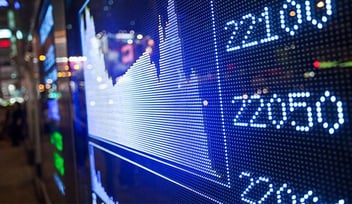We examine the recent strong movements observed in the currency market, linked to the coronavirus crisis and the collapse in oil barrel prices.
What triggered the panic in the world's financial centres?
The collapse in oil prices, following Saudi Arabia's unilateral decision to discount its oil, sent shocks that have reverberated way beyond commodity markets. And the exchange market has not been spared, with a massive impact on safe haven currencies, including the yen. As a result, Japan's currency has seen a one-week rise of 3% against the euro. Unsurprisingly, currencies that co-move with changes in oil prices have suffered the largest losses. Having already been hit by the rate cut announced last week by the Bank of Canada, the Canadian dollar continues to fall, with a one-week drop of 5% against the euro. Despite the fears of an economic recession in the eurozone, linked to quarantine measures in Italy and the impact of coronavirus on production chains, the euro continues its surge against the dollar, even coming close to moving through the 1.15 zone of resistance on Monday morning. This rise in the euro is not an indication of resurging investor confidence in the eurozone; rather, it reflects a fall in the dollar in the face of anticipated rate cuts by the US Federal Reserve.
Behind the financial panic lies the fear of a lasting economic crisis. All the ingredients are there: an external economic shock (coronavirus) and a shock in the commodity markets (oil). If such a scenario is to be prevented, the response by budgetary and monetary authorities will be crucial.
What can we expect to see in the coming days?
We are counting on new measures to bolster the economy, both budgetary and monetary:
- This Thursday's planned meeting of the ECB could see earlier-than-expected announcements of the introduction of a special lending facility for SMEs and mid-caps in the eurozone. The Central Bank may also be tempted to curb the strong rise in the euro by lowering its deposit rate by a further 10 basis points. However, there is no consensus on such an option, as it would have negative implications for the financial sector.
- The US Federal Reserve could take the emergency step of a further cut in rates similar to the one announced last week, to be accompanied by measures to ensure market liquidity.
- The Bank of Japan and the Swiss National Bank could intervene in the foreign exchange market. Japanese authorities have stated that they are monitoring exchange rate developments very closely, and are concerned about the sharp rise in the yen (a weekly rise of +3% against the euro, +5.5% against the US dollar and +4% against the Australian dollar).
- The G7 could meet urgently to discuss a co-ordinated fiscal stimulus plan. However, such an eventuality seems unlikely at this stage. Rather, the move is more towards stimulus measures taken on a case-by-case basis by individual countries, as Germany did over the weekend. At the very least, a co-ordinated European initiative could soon be put forward.
What will happen to the euro?
On Monday morning, the euro came close to moving through the strong resistance zone at the 1.15-dollar point, but failed. The currency pair is now trading within a wide range of between 1.1250 and 1.1500. The upward trend could be reinforced by the strong likelihood of a further rate cut by the US Federal Reserve. If the 1.1500 zone of resistance is crossed, the next target is at 1.1750. However, be wary, as the euro's upward movement is a flash in the pan. The economic reality in the eurozone – the serious risk of recession during the first half of this year – has not yet been reflected in the euro rate. Under these circumstances, it seems unlikely that the strong rise in the EUR/USD rate can be sustained.
Topics






